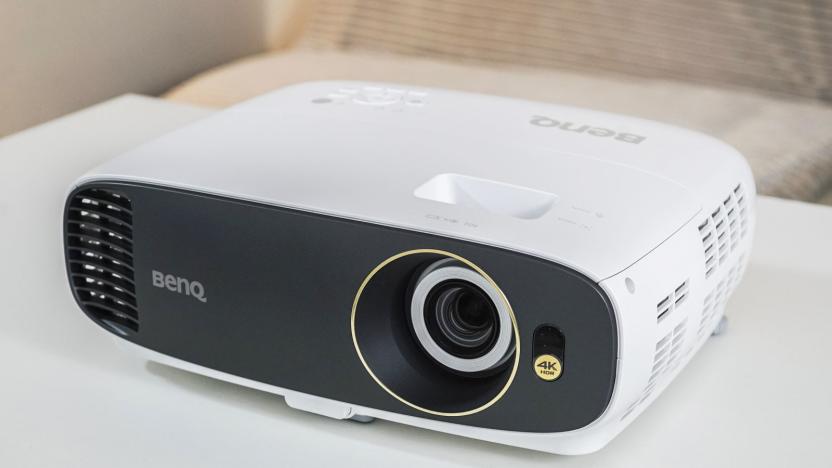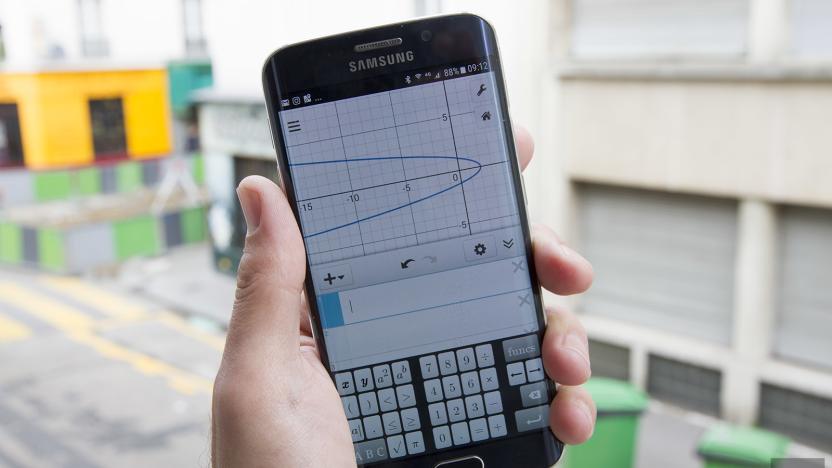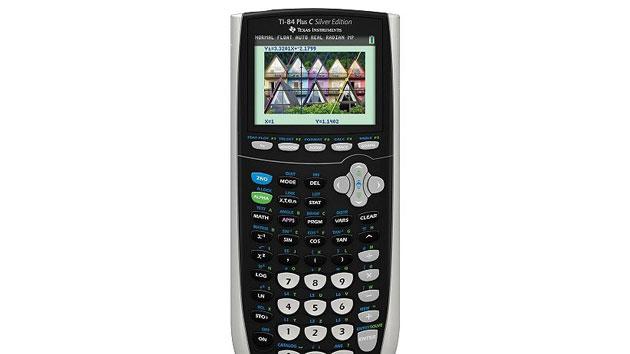texasinstruments
Latest

Speak & Spell is B-A-C-K
If you're a techie of a certain age (cough), you probably have fond memories of the Speak & Spell. The Texas Instruments toy's quirky speech synthesis may be quaint by modern standards, but it sounded like magic at a time when getting any computer to talk was a big deal. You'll be glad to hear it's back, then. Basic Fun is introducing a revived Speak & Spell that includes all the familiar games, that simple segmented display (albeit one based on modern LCDs) and, of course, that signature orange-and-yellow design. However, there is one important change you'll have to consider: the voice.

BenQ's HT2550 is a well-priced 4K projector with some minor issues
4K video is made to be seen on very large screens, and projectors are the cheapest way to do that. High-end models from Sony are out of reach, price-wise, for most of us, but cheap 4K projectors from BenQ, Optoma and others are finally hitting the market. One of the cheapest and most interesting is BenQ's HT2550 (known as the W1700 in some markets), priced at $1,500 and packing true 4K and HDR resolution. It delivers perhaps the most detailed image of any cheap new 4K projector, but it has a few flaws that should give you pause.

Numworks graphing calculator is made for students raised on tech
Like textbooks, graphing calculators are still a necessary (and expensive) accessory for math and science students in high school and college. Sure, there are calculator apps for tablets and smartphones, but those are often banned for tests because they could let you cheat online. So, many students have to buy them, and the dominant models from Texas Instruments and Casio can be complex and expensive. Now, an open-source calculator called Numworks is taking them on with a clean, simple look, an intuitive interface and open source programming and design.

Test-approved app could kill off the graphing calculator
Math students have a love-hate relationship with the funky, expensive TI-84 graphing calculators, but thanks to a new deal, they'll soon get a free option. Starting this spring, pupils in 14 US states will be able to use the TI-like Desmos online calculator during standardized testing run by the Smarter Balanced consortium. "We think students shouldn't have to buy this old, underpowered device anymore," Desmos CEO Eli Luberoff told Quartz.

TI's educational coding tool plugs into your calculator
Despite all the phones and tablets out there, Texas Instruments' graphing calculators continue to survive. The company's latest classroom tool even turns them into a device that can teach kids coding and engineering. TI-Innovator Hub plugs into the company's graphing calculators a lot of middle- and high-school students already have. It's a palm-sized board with a microcontroller that gives kids a way to build simple engineering projects. They could make LEDs light up, play notes or make small toys move by plugging the components into the hub and writing a program on the calculator.

Texas Instruments has a gold-hued graphing calculator
Want to prove that you're a cosine champion at your next math exam? Texas Instruments thinks it has the answer. It's trotting out a limited edition version of the TI-84 Plus CE graphing calculator that comes in a gold-hued (as TI puts it, "Golden Ratio") metallic shell -- yes, you can show some swagger while you're visualizing functions. There's also a special "Bright White" model (below) if you're not quite so ostentatious. Both calculators should arrive this summer without a price premium (existing models sell for $108 on Amazon), so you won't have to pay extra to bring some flash to your calculus class.

Recommended Reading: The making of a self-driving semitruck
Recommended Reading highlights the best long-form writing on technology and more in print and on the web. Some weeks, you'll also find short reviews of books that we think are worth your time. We hope you enjoy the read. How Daimler Built the World's First Self-driving Semi by Alex Davies Wired In case you missed it, Daimler built a self-driving big rig, and it just recently got the OK to hit the road in Nevada. The Freightliner truck, known as Inspiration, took a team of around 60 engineers six months to build. Wired's Alex Davies offers a behind-the-scenes look at the project, detailing some of the tech that's onboard.

TI's super-slim graphing calculator shows that math can be stylish
Who said that graphing calculators were dead in the smartphone era? Certainly not Texas Instruments -- if anything, it's showing that there's still plenty of life left in dedicated math machines. Its new TI-84 Plus CE is 30 percent thinner and 30 percent lighter than the regular Plus, making for a surprisingly sleek-looking way to crunch numbers. It has six times the memory, too, so you can store more color graphs and images (and, let's be honest, a fresh copy of Drugwars for goofing off mid-class). TI hasn't divulged pricing for the Plus CE, although its new design and advanced feature set hint that it'll be relatively costly when it arrives in the spring. Look at it this way, though: you might just be the envy of your fellow students when you take this svelte plotter out of your backpack.

Forget quadratic equations, play 'Super Smash Bros.' on your TI-83
The geniuses that guided Rosetta's lander onto a freaking comet no doubt put their TI-83 programmable calculators to good use, but you know what the rest of us were doing with them? Yeah, playing Wolfenstein. Now you can misspend physics class with another game: Super Smash Bros. Programmer Hayleia managed to port it over to the TI-83/84, and even left the code open for anyone to modify. It has a great zoom effect to make better use of that low-res screen, though for now you've only got Fox and Falco to play with. Yes, yes, we know that there are brand new versions of Super Smash Bros. for 3DS and Wii U (soon) with over 40 playable characters each, and you should totally try those. Meanwhile, you've got something to do (while appearing productive) when your trig prof hits a new level of boredom.

Recommended Reading: The legend of the TI-84 Plus
Recommended Reading highlights the best long-form writing on technology and more in print and on the web. Some weeks, you'll also find short reviews of books that we think are worth your time. We hope you enjoy the read. The Unstoppable TI-84 Plus: How an Outdated Calculator Still Holds a Monopoly on Classrooms by Matt McFarland, The Washington Post Chances are pretty good that you've come in contact with a TI-84 Plus of some kind during the course of your education -- if you're been schooled in the last 10 years. The calculator debuted back in 2004 and it still has a firm grasp on the education market today. This piece takes a look at what that foothold means when compared to other devices' market share, and how a new Silver Edition looks to keep the advantage with Texas Instruments in the foreseeable future.

Texas Instruments shrinks its HD DLP Pico projector chip down to 0.3-inches
We wouldn't say that smartphone projectors have exactly caught fire, Samsung's Galaxy Beam notwithstanding. Part of the problem is the extra bulk required by pico projector components, which is where Texas Instruments comes in with its new HD "Tilt and Roll" DLP Pico chipset. They've now got the size down to about 0.3-inches, or about the size of a pencil-tip as shown above. That should let makers of tablets, smartphones and wearables add 120 Hz projector powers to their devices. It's also the chip used in Avegant's Glyph VR headset -- so it might be beaming a movie directly to your retinas at some point in the future.

TI intros DLP pico projector chipset based on its Tilt & Roll Pixel technology
TI's DLP unit promised us brighter, sharper pico projectors when it unveiled its Tilt & Roll Pixel architecture at CES, and it now has the TRP-based silicon to make those projectors possible. The company's new DLP Pico 0.2" TRP chipset produces images with up to twice the brightness and resolution of its ancestor, even while it uses as little as half the power. The company hasn't named hardware partners, but it notes that companies are already building products with the chip; it may not be long before we see the next generation of projector-equipped smartphones and tablets.

Texas Instruments brings fast charging, extended life to Li-ion batteries
Yesterday Texas Instruments introduced a couple of new chipsets (fuel gauge an charger ICs) designed to improve the charging speed and life expectancy of single-cell Li-ion batteries. The technology, called MaxLife, is expected to provide an improvement of up to 30 percent in battery service life and faster charging times. Cell impedance is carefully monitored by the fuel gauge chip while the charger IC uses a model of battery degradation to charge the cell in the most effective way. Both chips are connected via an I2C bus to form an autonomous battery management system which, according to the company, is safer and more thermally efficient than existing solutions. The two chipsets (2.5A and 4.5A) are now available along with a development kit, so it's only a matter of time until this technology lands into handsets and other devices that use single-cell Li-ion batteries. Check out the details after the break.

BeagleBone Black packs 1GHz ARM CPU, 512MB RAM for just $45 (video)
The BeagleBone might be just the piece of kit for the DIY set itching to boot Linux in 10 seconds, but the freshly unveiled BeagleBone Black packs an even greater punch -- and the same speedy start times -- at just half the price of its predecessor. The $45 credit card-sized package totes a 1GHz ARM Cortex-A8 processor, 3D graphics accelerator, a pair of PRU 32-bit RISC CPUs, 2GB of built-in storage, a microSD slot and 512MB of RAM. Connectivity-wise, the canine-themed board carries support for USB, Ethernet, micro-HDMI and two 46 pin headers. Those pining for hardware flexibility can make use of the platform's existing "cape" hardware add-ons. Though it ships from Texas Instruments with Angstrom Linux on board, it's also tuned to support Android and Ubuntu, and arrives pre-loaded with the Cloud9 IDE. BeagleBone Black is already up for grabs in limited quantities, but it's expected to ship en masse by the end of May. Hit the second source link to start ordering, or head past the break for a video tour of the pint-sized computer.

TI shows off LaunchPad-based prototype mouse, hints at a big follow-up
If you've been needing a little inspiration for your next TI LaunchPad project, look no further than the company itself. Texas Instruments set up shop in the maker tent across from the Austin Convention Center this week, showing off creations built atop its line of microcontrollers. The rep we spoke with was particularly excited about this mouse hack that the company put together in a few hours, while getting ready for SXSW. The creation utilizes the Stellaris board's accelerometers to control the cursor of a Windows machine on X, Y and Z axes, via USB. The project is more than just a hack, according to the company -- it's actually a prototype of something it's set to unveil later this year. No specifics on that front, but TI promised a "big surprise." In the meantime, you can check out video of the project after the break.%Gallery-181193%

DLP's IntelliBright tech promises brighter pico projection at no extra power
Most portable projectors are tasked with striking a delicate balance between power consumption and picture quality. With this in mind, Texas Instruments' DLP arm has unveiled a new system at MWC known as IntelliBright, which is intended to improve the brightness of pico projectors without making hardware hungrier. It's no fancy set of circuits, though, but a pair of algorithms which tinker with image brightness and contrast to produce a more radiant picture. What's more, the algorithms can be tweaked separately by hardware manufacturers for any desired result, and can incorporate data from ambient light sensors to increase projector efficiency. DLP recently introduced its new Tilt & Roll Pixel chip architecture at CES, which is also designed to make pictures brighter and batteries happier in the next generation of pico products. All we hope is the developments inspire Samsung to create a Galaxy Beam II, just with more focus on the phone part this time

Apple opens third Israeli development center
Globes is reporting that Apple has now opened its third R&D center in Israel. The facility is based in the city of Ra'anana and will be staffed by 100 to 150 former Texas Instruments employees that were laid off late last year and earlier this year. Perviously it was reported Apple only hired "dozens" of those workers. The Ra'anana R&D center comes after Apple acquired flash memory maker Anobit for up to US$500 million in December 2011 and opened a Haifa-based R&D center in 2012. As with the previous two R&D centers, no one knows exactly what Apple is working on at Ra'anana. Globes states that when TI owned the facility its operations were primarily based on "technological capabilities in short-range communication chips, mainly for WiFi, Bluetooth and NFC" but that "in all likelihood Apple will take the Ra'anana center into a different strategic direction."

TI-Nspire rethinks the graphing calculator for the iPad (video)
With tablets slowly working their way into the classroom, it wasn't a huge stretch to realize that Texas Instruments would bring a graphing calculator app to the table, but would you believe its solution is just hours away? The company has revealed TI-Nspire for the iPad, which is currently available within the App Store for those in Australia. Beyond problem solving, the product is said to provide an interactive experience that should be helpful for reinforcing mathematical concepts. Depending on your needs and curriculum, you'll find numerical and symbolic (CAS) versions of the TI-Nspire app, both of which cost $29.99. Yes, the app's a bit pricey, but it's not surprising given the insane profit margins of TI's graphing calculator biz. Hop the break for a better peek of the app that might just become required within classrooms.

GE looking to saddle up with TI, bring dual-piezo jet cooling to market
We're often disappointed when 'cool'-looking inventions never come to market, but it looks like the dual-piezo jet fans we saw in GE's labs recently have a fighting chance. The company told us at CES 2013 that it wants to team with Texas Instruments to put the millimeter-thick, bellows-like units inside upcoming Ultrabooks and other devices that have no room for a traditional fan. Such a partnership could work out since GE has little experience in the gadget-space, and TI has all the power conversion bits necessary to make the tech work, since they're similar to the latter outfit's circuits used in so-called high-definition haptics, a tactile feedback system. Representatives from the two outfits said that manufacturers are already working with the tech, meaning we could see the technology in slimmed down products like Ultrabooks within a year -- perhaps just in time to meet Haswell's demanding specs.

Live from the Engadget CES Stage: an interview with Texas Instruments' Frank Moizio (update: video embedded)
Love tiny projectors? Boy have we got the conversation for you! We'll be speaking with Texas Instruments business manager, DLP Pico Projection, Frank Moizio, who will be showing off new devices featuring the technology and discussing the company's new architecture and the outlook for pico projectors in the future. January 9, 2013 12:30 PM EST Check out our full CES 2013 stage schedule here! Update: video embedded









